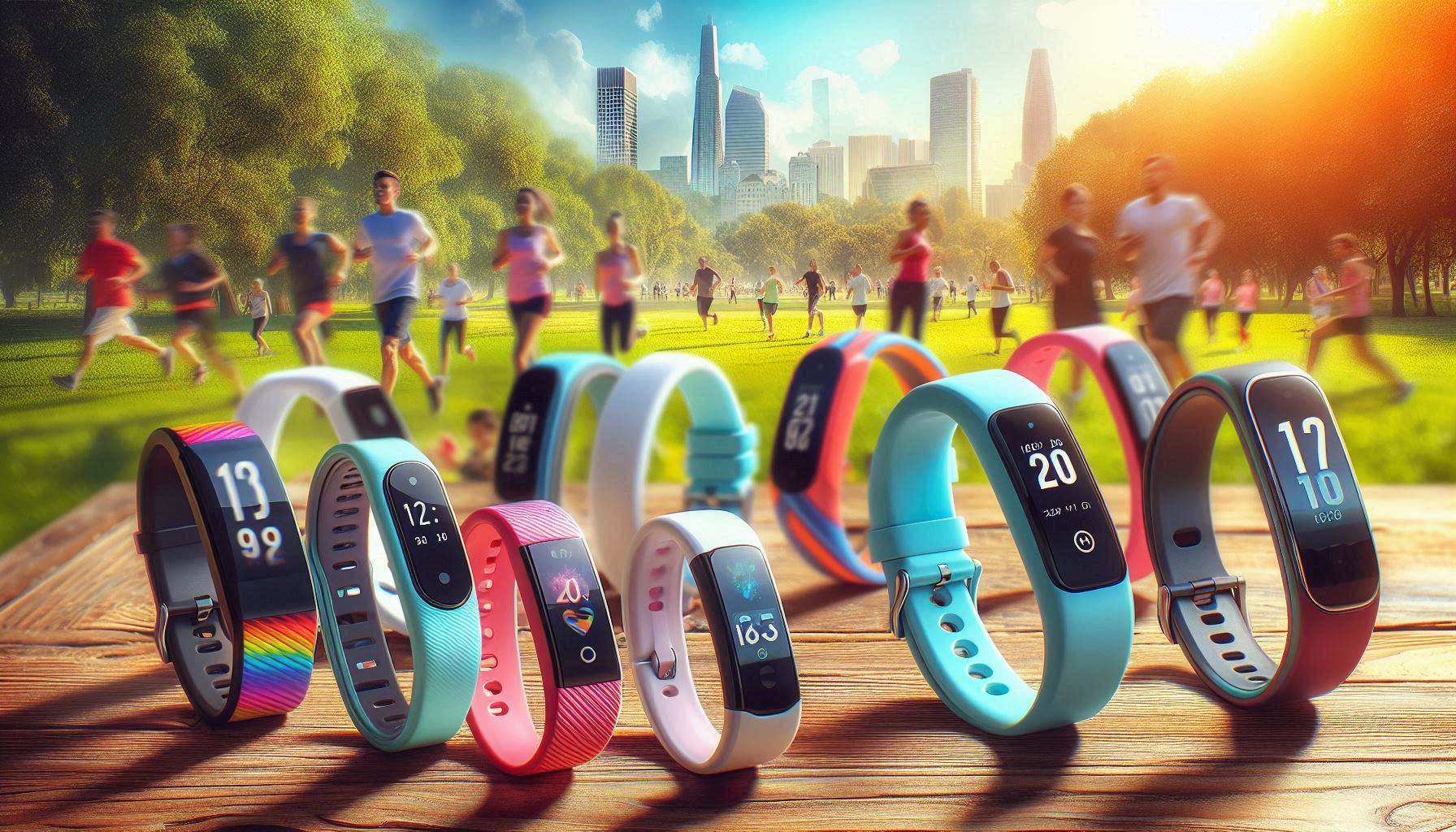Are you currently using any type of fitness tracker device? Do you feel that you are getting the most benefit from your device? If not, this article is definitely for you. Let’s take a look at How To Get The Best From Your Fitness Tracker. After all, if you are not really feeling any benefit from it, there is not much point in using it.
Introduction
Fitness trackers have become a common sight on wrists and in gyms, offering a convenient gateway to understanding our health and activity levels. But simply wearing a fitness tracker isn’t enough to truly benefit from it. Many users sync their device, glance at daily step counts, and stash it away, missing out on the device’s full potential. When used strategically, a fitness tracker can become a powerful tool for motivation, health monitoring, and personal growth.
To harness that power, you need more than data. You need meaningful insight, consistency, and action. In this guide, we’ll explore how to maximize your fitness tracker’s value with behavioural strategies, app settings, exercise integration, and long term planning. Whether you’re just starting out or an experienced athlete, these tips will help you elevate your health journey beyond numbers on a screen.
How To Get The Best From Your Fitness Tracker
1. Choose the Right Tracker for Your Goals
Not all fitness trackers are created equally. Some focus on basic activity logging while others offer in depth metrics like VO₂ max, recovery scores, ECG, and GPS based exercise mapping. Before you invest time in your device, assess what you really need:
- For step counting, basic heart rate, and sleep monitoring: Devices like the Fitbit Inspire or Xiaomi Mi Band offer value and simplicity.
- For advanced health data: Devices such as the Garmin Venu 3 or Apple Watch deliver richer metrics, heart rate variability, stress levels, and VO₂ max estimation.
- For training performance: Choose trackers with GPS, workout guidance, and interval tracking. Models like the Polar Vantage series or Coros Pace are great examples.
Your fitness goals should align with your tracker’s capabilities. Choose a device that supports what you want to achieve, whether it’s exercise performance, recovery, or wellness monitoring.
2. Prioritize Proper Setup and Calibration
How you set up your fitness tracker shapes how well it performs:
- Ensure accurate personal data: Input correct age, weight, height, and sex to improve calorie and heart rate estimation.
- Calibrate heart rate and stride if possible: For example, Fitbit and wearable apps often ask calibration questions or instruct you to walk certain distances to improve accuracy.
- Authorize permissions: To track sleep, heart rate, and notifications, allow access to necessary sensors and phone features.
- Sync regularly: Keep one eye on your app to prevent data overflow or sync issues. Many platforms enable auto sync multiple times a day.
A small effort during setup pays off with far more accurate and reliable insights over time.
3. Embrace Habit Forming Through Reminders and Goals
Most fitness trackers offer goal setting and reminders. Tools that can significantly reshape your daily choices:
- Move reminders: Use hourly cues to step away from your desk and walk for a minute or two. Every step adds up.
- S.M.A.R.T. daily goals: Instead of a vague “get fit,” aim for steps (10,000+), active minutes, calories burned, or workout days. Your tracker can help measure all of these.
- Weekly practice goals: Platforms like Apple Fitness and Garmin allow you to set weekly movement targets to guide consistent behaviour.
These nudges create cycles of reinforcement. Each success, whether completing your standing goal or topping your step count becomes a dopamine boost that cements your habits.
4. Get Familiar with Your App Dashboard
Your fitness tracker collects all kinds of data. Steps, heart rate, sleep, stress, workouts. But insights come from how you interpret them. Some key dashboard features to explore:
- Sleep Score and Stages: Look into duration, deep and REM sleep. Plus factors affecting quality.
- Resting Heart Rate (RHR): A lower trend over time often reflects better fitness. Sudden spikes may signal illness or stress.
- Heart Rate Variability (HRV): A good HRV suggests recovery and resilience. Low readings may indicate overtraining or poor recovery.
- Training Load / Recovery Metrics: Some trackers provide training readiness scores. These are ideal for planning workouts and rest.
- Weekly Trends and Graphs: Spot patterns such as higher step days, worse sleep, or increased stress, so you can adjust.
Understanding what each metric reveals and how to interpret the data empowers you to make better lifestyle decisions.
5. Use Data to Guide Smarter Workouts
Fitness trackers can be powerful training partners. With some strategy:
- Peaking Recovery Ready: If your tracker signals low readiness or high stress, consider an active recovery session like yoga or stretching.
- Heart Rate Based Workouts: Train within HR zones (e.g., fat burn, cardio, anaerobic) to ensure effective and safe workouts.
- Automatic Workout Detection: Many trackers detect walking, running, cycling, swimming, or elliptical automatically. Always review and correct activity tags afterward.
- GPS Runs or Rides: Tracking distance, pace, and elevation can help you progress over time and structure speed work.
- Track Consistency: Use the weekly summary to ensure a balanced week. A mix of cardio, strength, and flexibility.
Use this feedback to build not just effort, but thoughtful, well rounded fitness habits.
6. Integrate Recovery and Wellness Metrics
Health isn’t just about movement quantity. Rest and recovery are equally important:
- Sleep is Essential: Aim for 7 to 9 hours per night. Address disruptions, jetlag, or stress influenced fragments.
- Listen to HRV: Low HRV can signal stress, illness, or need for rest. Take heed of it.
- Use Stress Scores or EDA Scanning: Tools on Fitbit or Garmin can show your body’s stress levels. Use them to justify midday breaks, breathing exercises, or mindful walking.
- Track Resting Heart Rate: A sudden spike in RHR may indicate dehydration, illness, or fatigue.
Understanding the full picture helps steer habits toward wellness, not just performance.
7. Foster Social Motivation and Accountability
Community features can supercharge your progress:
- Challenges: Participate in step challenges with friends or wider platform communities.
- Share on Social: Post workouts or achievements and let friends cheer you on.
- Friendly Rivalries: A weekly leader board or badge system multiplied with friends can boost motivation.
- Community Aid: Engage in forums or groups (like Reddit or platform forums) to gain advice, cheer others, or celebrate joint milestones.
Accountability grows when you’re not just competing with yourself . You’re joining a movement.
8. Balance Forever, Not Forever Burnout
Health data can be a powerful tool. It can also be overwhelming. Maintain balance by:
- Look at the 7 Day Overview: Focus on weekly patterns rather than daily fluctuations.
- Avoid Over Chasing: It’s okay if you don’t meet your target every single day. Balance is key.
- Plan Regular Rest Days: Rest is part of progress. Choose active recovery, not stagnation.
- Take Breaks from Wearables: If you’re feeling obsessed or stressed about goals, try a “wearable break day” to reset mentally.
Wearables should improve your well being, not dominate it.
9. Keep Your Tech Up to Date
To unlock ongoing improvements:
- Update Firmware: Watchmakers regularly release software updates to improve accuracy, battery, and features.
- Upgrade Apps: Stay current so data syncs and features remain stable.
- Explore Integrations: Sync your data with apps like MyFitnessPal for nutrition, Strava for cycling/running, or Apple’s Health ecosystem for broader backups.
- New Features Appear Regularly: Especially with smartwatch based trackers, features like blood oxygen, ECG, or training load can be added via updates.
Maintain your tech like your health. Review it, improve it, and let it evolve.
10. Know When to Move On
There comes a time when an entry level tracker no longer meets your expectations. Signs include:
- Lack of GPS when needed for your runs/rides
- No advanced data like HRV, VO₂ max, or training load
- Inefficient battery or outdated interface
- Device is no longer supported or can no longer be worn comfortably
As your fitness and ambitions grow, upgrade to devices that match your evolving lifestyle.
Frequently Asked Questions
1. How accurate are fitness trackers for steps and calories?
Answer: Fitness trackers are fairly accurate for step counts, usually within 5 to 10% of actual totals. However, calorie estimates can vary more widely depending on the device and whether it uses heart rate, activity type, and personal metrics like age and weight.
2. Do I need to wear my fitness tracker all day?
Answer: For the best insights, yes. Wearing your tracker all day (and night, if it has sleep tracking) gives you a full picture of your activity, rest, heart rate patterns, and more.
3. How do I set realistic fitness goals with my tracker?
Answer: Use your baseline data from the first week of use to set achievable targets. For example, increase your daily step count by 10% per week or aim to add 10 to 15 minutes of activity each day.
4. Can a fitness tracker help with weight loss?
Answer: Yes, by helping you monitor your activity levels, calorie burn, and even your sleep and hydration, a fitness tracker can support weight loss when combined with a balanced diet and consistent routine.
5. How often should I sync my fitness tracker?
Answer: Daily syncing is recommended to ensure your data is up to date, saved, and available for review on your app or health dashboard.
6. Is it safe to wear a fitness tracker while sleeping?
Answer: Yes, most fitness trackers are designed for 24/7 wear, including during sleep. In fact, tracking your sleep can provide valuable insight into recovery, stress, and overall health.
Conclusion
A fitness tracker is more than a gadget. It’s a silent coach guiding you toward better health, strength, and awareness. But it won’t work its magic without your intentions, effort, and consistency. By selecting the right device, setting realistic goals, interpreting your data intelligently, and balancing effort with rest, you’ll unlock a level of control over your health that few ever reach.
Your journey doesn’t end with syncing. It begins there. Use insights to build lasting habits. Move more, sleep better, manage stress, and train smarter. Over time, you’ll see how small, data informed actions compound into big life changes: healthier routines, sharper workouts, and a stronger, more engaged you. In short, your fitness tracker won’t transform your life. Following where it leads to certainly can.
Our Thanks!
We would like to extend our sincere thanks to you for reading this article on How To Get The Best From Your Fitness Tracker. We hope that you have found it helpful in your quest to maximise the benefit from your fitness tracker device. If you would like some further reading, please feel free to look through our blog. There are lots of really helpful and informative articles on a range of wearable health tech subjects.
You might like our related article which is titled The Best 8 Fitness Tracker Smart Watches. Please let us know in the comments section below what your thoughts are of your current fitness tracker or which one you are thinking of purchasing in the future.
**Here is a bit of transparency. Our website www.vertevia.com does contain affiliate links and Amazon links. So, if you did make a purchase through the website, we may receive a small commission. This is at no extra cost to you whatsoever. It’s just a way for you to support us as we continue to bring you top quality content**
All the best!
Eamon

